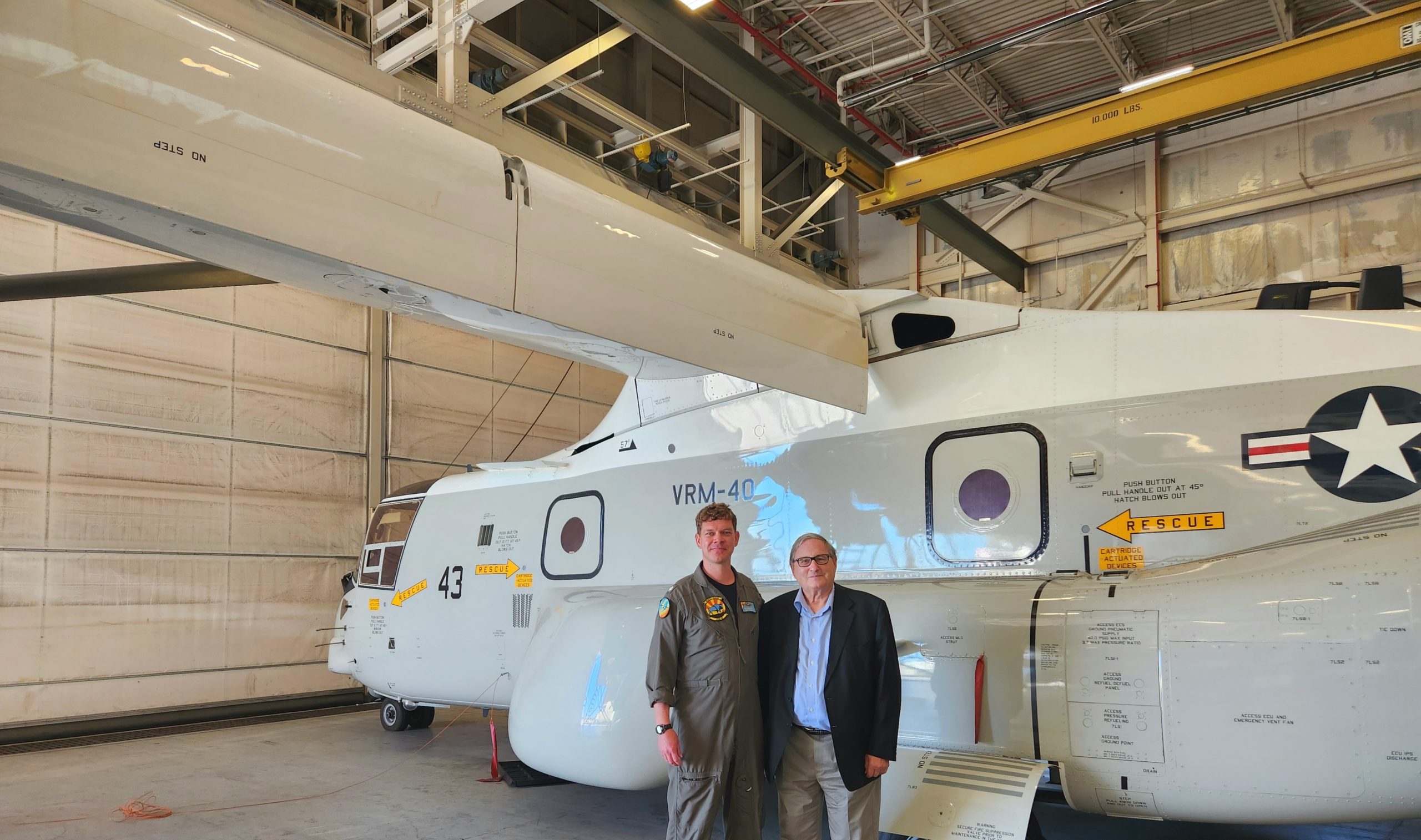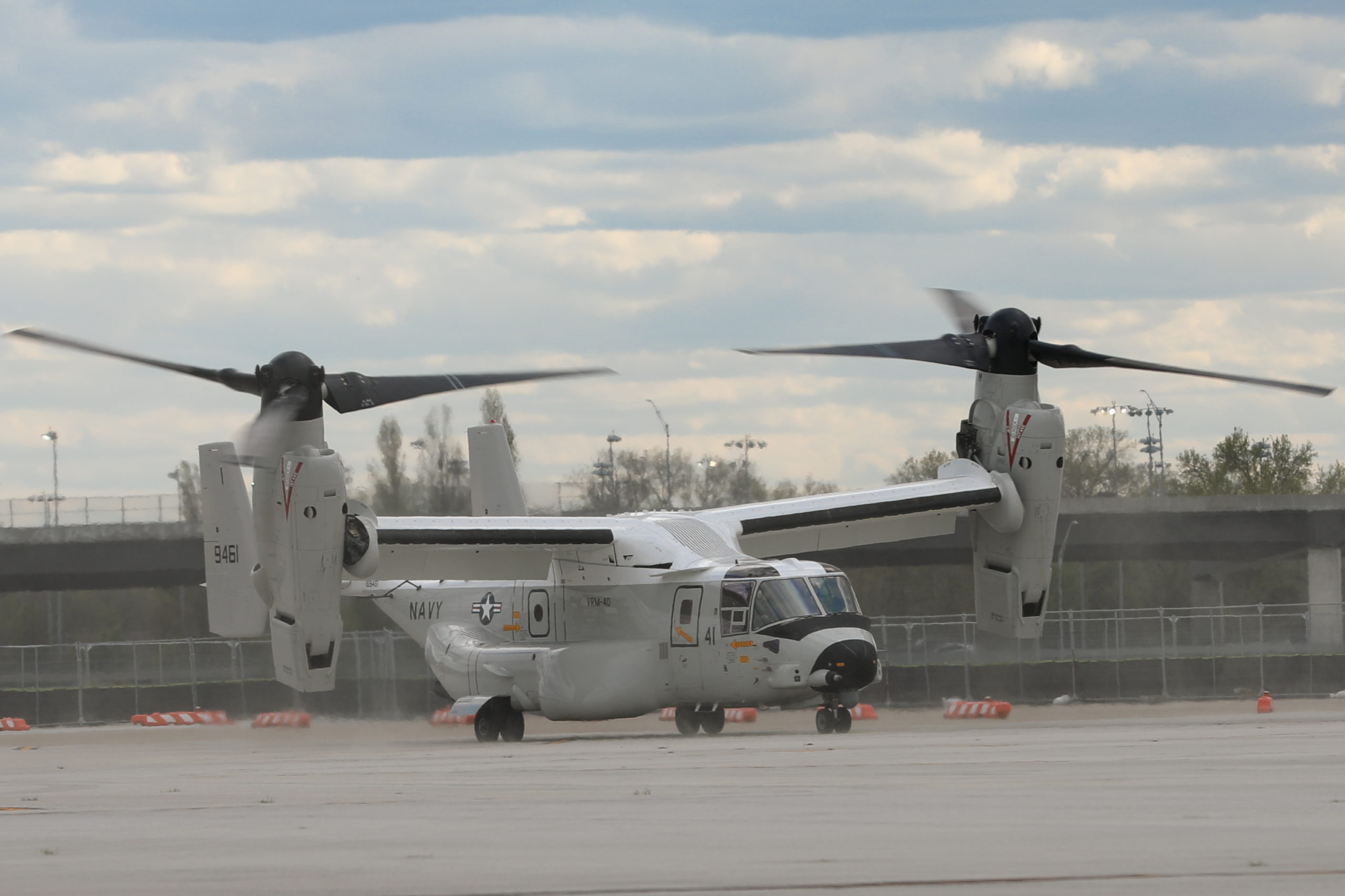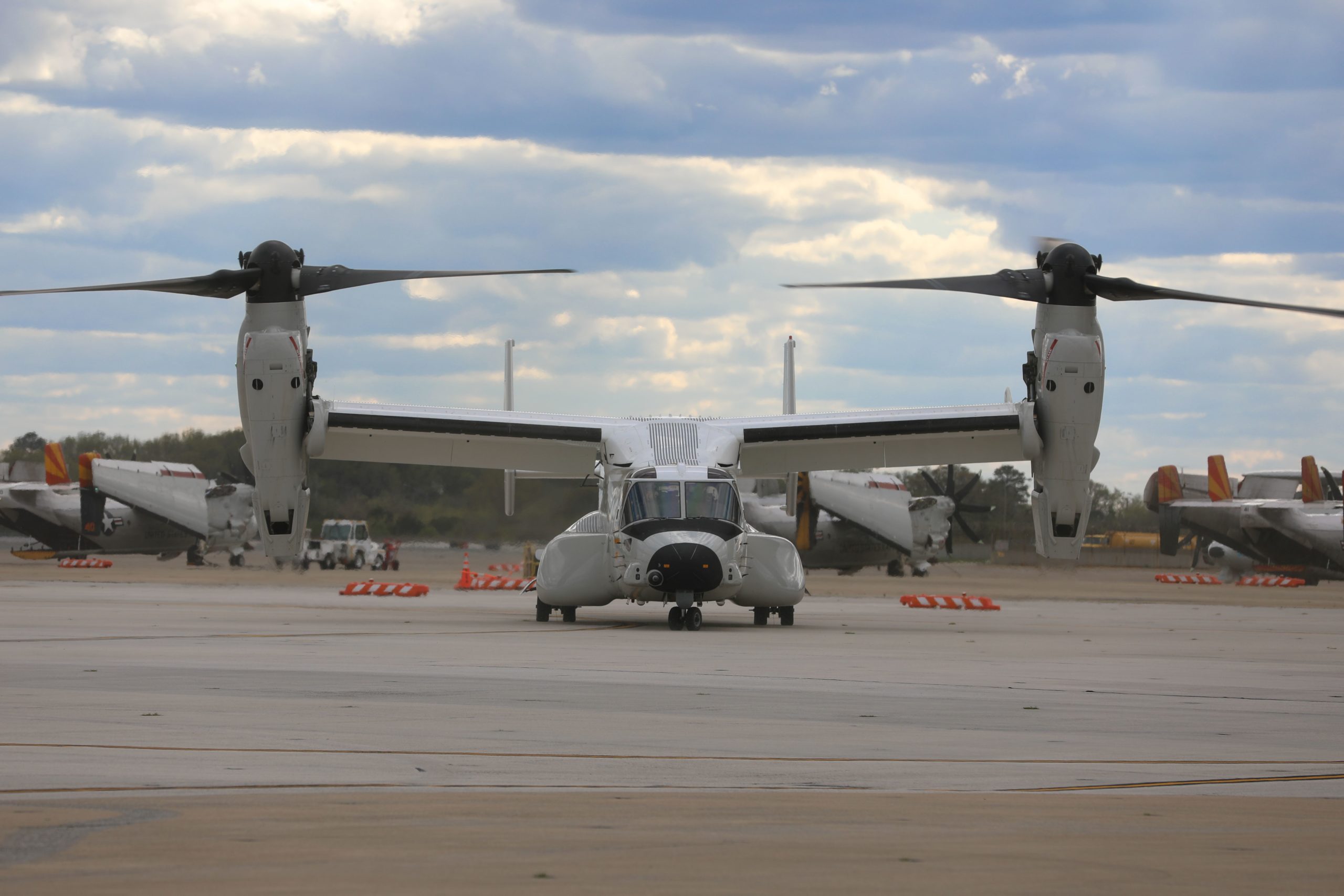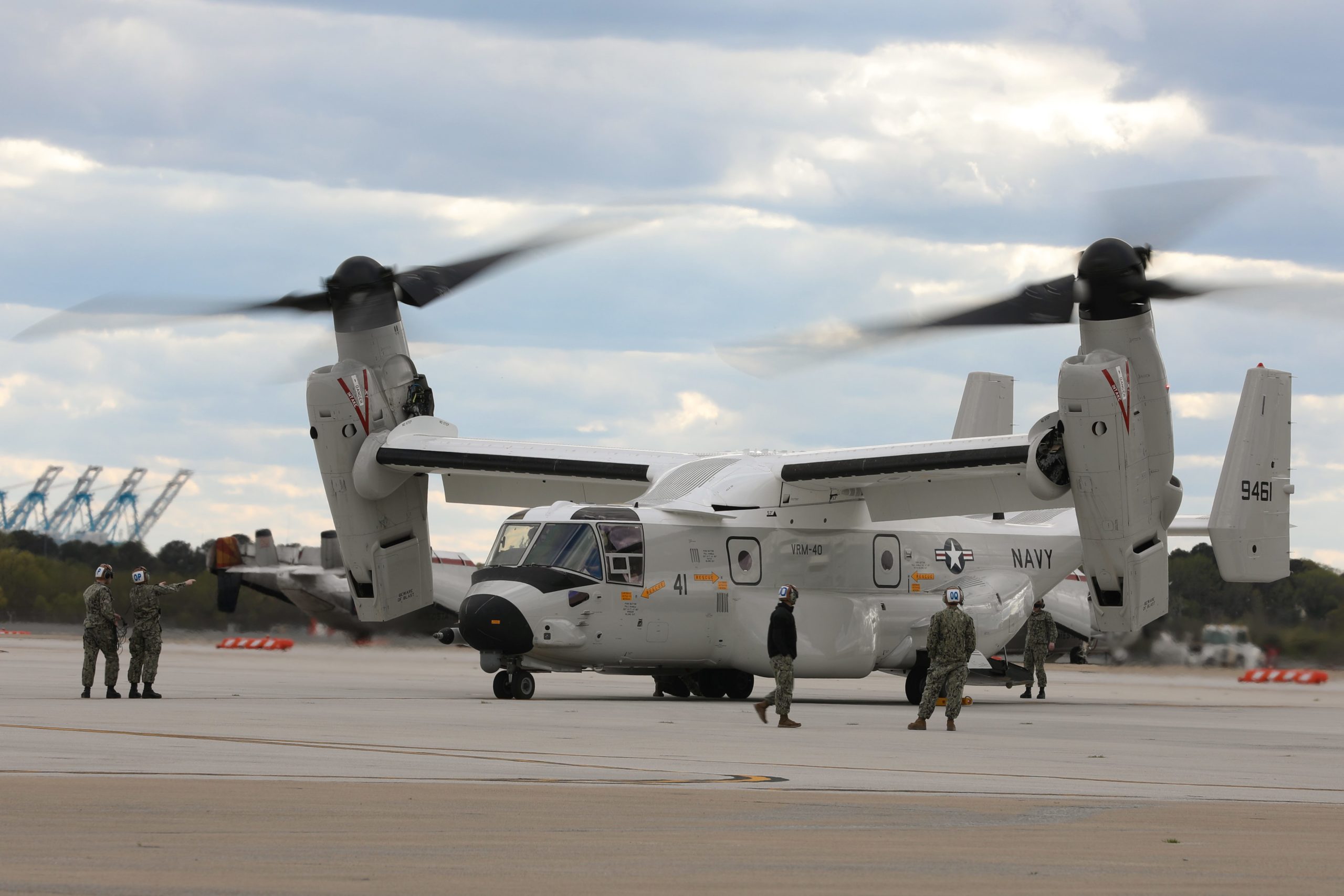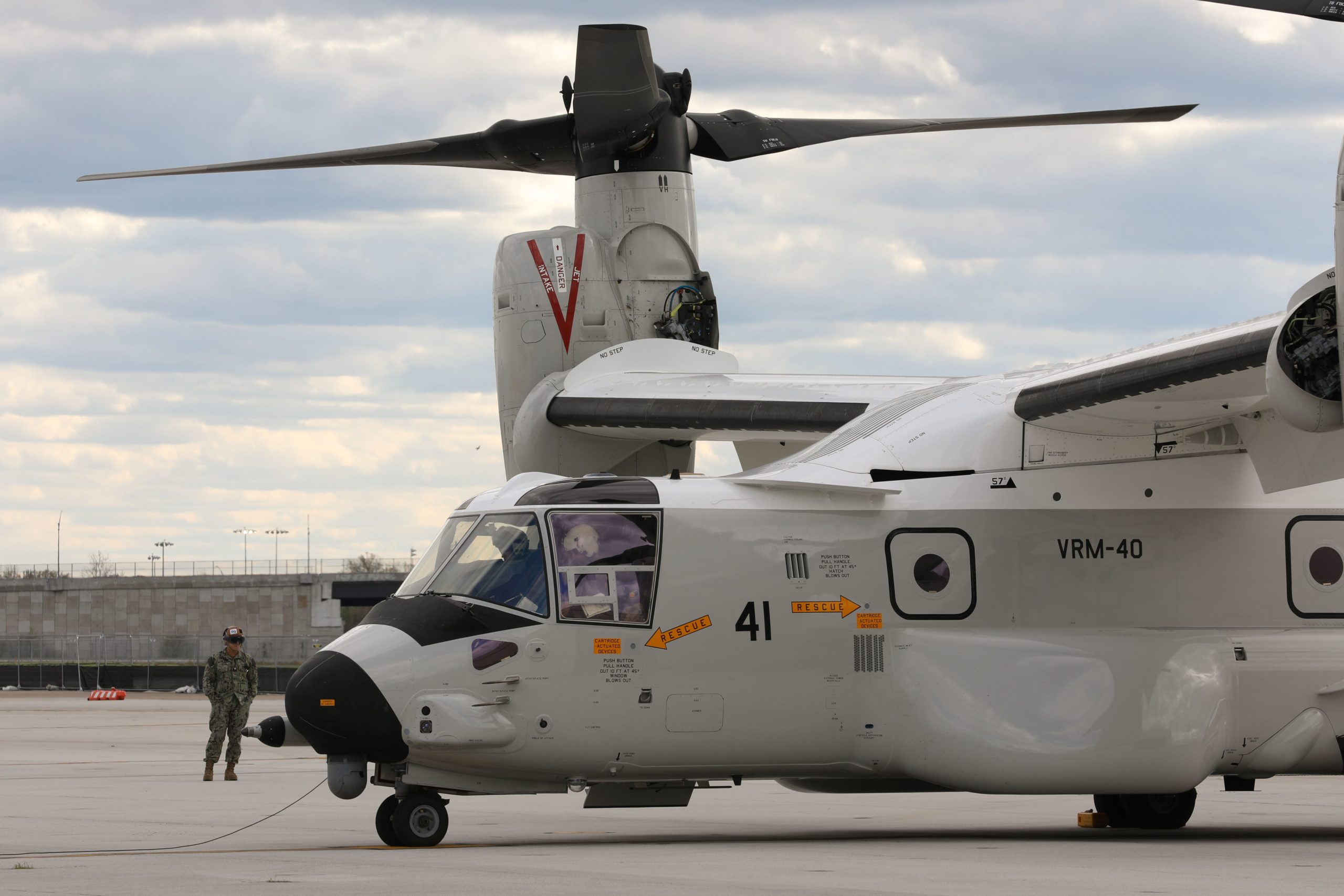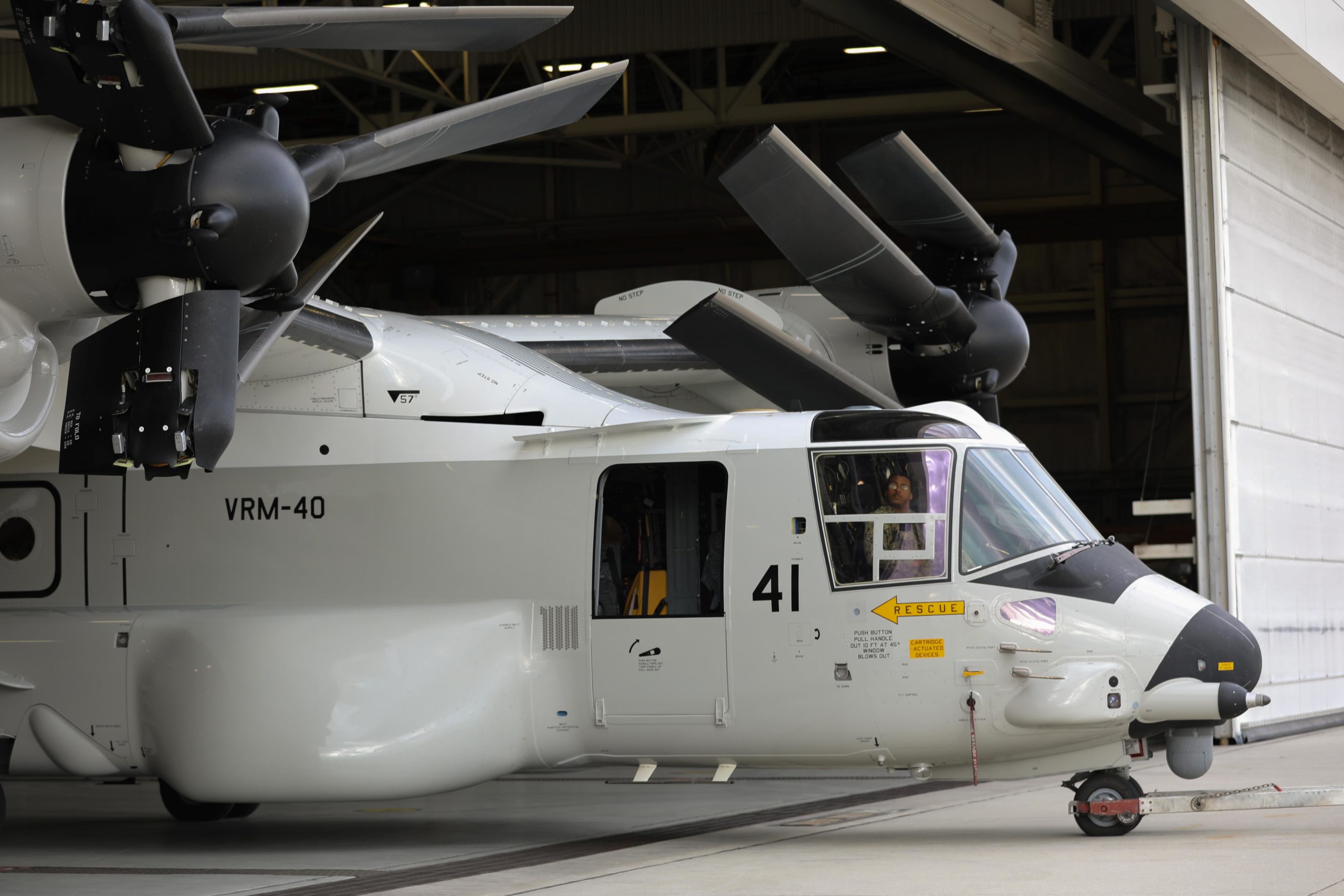By Robbin Laird
I had a chance to visit Fleet Logistics Multi-Mission Squadron (VRM) 40 the “Mighty Bison” on Oct. 29, 2024. Earlier, I visited West Coast squadrons at North Island, San Diego, but this was my first opportunity to visit the squadron at Naval Station Norfolk.
This squadron will play a key role in helping the U.S. Navy to operate within the “contested logistics” environment now facing the U.S. Navy fleet, a major challenge in both the Pacific and the Atlantic.
I had a chance to meet with the following officers: Commander Mason Fox, VRM-40 commanding officer; Commander Brett Learner, VRM-40 executive officer; Lieutenant Sam Ector, VRM-40 assistant operations officer; and Aviation Electrician’s Mate Chief Petty Officer Frank Schaeffer, VRM-40 maintenance chief.
We had a broad ranging discussion regarding the squadron and its preparation for its core missions.
During that conversation, Fox indicated how they met an unusual challenge for a new squadron. As they were getting ready to go from North Island (San Diego) to Norfolk on Dec. 6, 2023 with their first Ospreys, the DoD grounded the Osprey fleet DoD wide. Obviously, this was a shock but one which the squadron and its support community found a way to respond.
According to Commander Fox, the squadron had received their flight simulators so the pilots could train in the absence of flying real airplanes while waiting for the grounding to be lifted. And he indicated that the maintainers worked with Bell in Fort Worth on training the maintainers.
This meant that when the grounding was lifted in March 2024, the squadron was ready to re-commence their stand-up effort.
The core mission for the squadron is to replace the C-2A in the carrier re-supply mission. But because the Osprey can operate on a variety of ships or from a variety of locations, it can provide for fleet support in a contested environment.
As Commander Fox put it: “The aircraft is very capable, and the pilots and air crewmen can do whatever mission we’re tasked with for distributed maritime operation logistics. And that’s the key point. If a flag officer says that they need to get a [supply] part to a submarine, we’ll be able to do that. I’ve done so many different mission sets in my career, from ASW to attack to SOF support. All of them come down to time, distance, fuel and hover capability. If you can do time, distance, and fuel math calculations and understand your power margins, then really it’s up to the people that task us with logistics to choose how they want to employ us.”
What they have been focused on since the squadron has been activated is working with the carrier community on the logistics operations for East Coast based carriers, the Truman and the Ford. They worked with the Truman in June 2024 and the Ford in September 2024. They are planning to next continue their training with the Bush in the future.
The focus according to Fox: “We want to integrate as tightly as we can with the carriers and the air wings on the East Coast so that they fully understand our capabilities.”
They work with the CAG when onboard the carrier as does the C-2A. I noted when onboard the Ford that it has a significant design feature that will work well with the CMV-22B. The island on the Ford is not in the middle of the carrier flight deck but at the end which will allow the Osprey land on the carrier deck and be parked out of the way near the lift elevators onboard the carrier so not to get in the way of the launch and recovery operations going on the flight deck.
The C-2A has several parts in common with the Hawkeye, but I asked how they will address parts issues onboard the carrier for the CMV-22B.
I was told that a footprint of support personnel will be set up on the carrier to deal with this need, somewhere in the vicinity of 15-20 people.
The CMV-22B is the Navy version of the Osprey but Fox discussed the importance of what I have called the tiltrotor enterprise for the joint fight and the contribution which Navy Ospreys can make as well.
According to Fox: “Our version of the Osprey has a little bit more gas that we can carry, and we have a primary mission that is different than the Marine Corps and Air Force Ospreys. But I think that if we’re looking at a joint fight, we’re looking at the 450 plus Ospreys that are part of the program record. They will all be contributing to distributed maritime ops, because that’s the fight we are in.”
My final question was about how many aircraft are now in the squadron and what will be its eventual size. I was told that there were six planes currently in the squadron with a seventh to arrive the coming weeks. Dependent on final funding, they would have 12-15 Ospreys in the squadron.
Following our conversation, we all met in the squadron’s temporary hangar. There is a new hangar being built nearby (two hangars down). The Ospreys rest already on the rebuilt tarmac next to the new hangar location.
Note: The first photo below was taken during my visit and my tour with Commander Fox. The other photos are from the first arrival of the squadron and are credited to the U.S. Navy.



